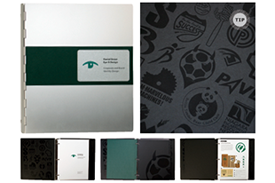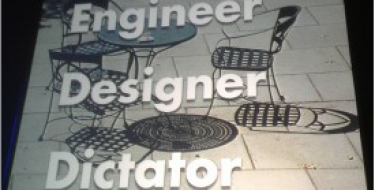Building A Portfolio The "Right" Way
In my last blog, I mentioned the steps in creating a personal identity. Branding yourself is an important step in building a portfolio. Your portfolio will be branded with your personal identity and help leave a memorable impression on the employer who you may be showing your portfolio to. Here are some subtle points that are often mentioned when building a portfolio but are not right or wrong.
What size should a portfolio be?
There are various sizes that designers may use in showing their portfolio. Whether it is landscape or portrait it does not matter, although you should be conscious when choosing a format because the sole purpose is to display your work. Most portfolios are landscape only to allow an image of your work and a paragraph to explain your thought process, goals, etc…
Even though there are several sizes the most common is no smaller than 11x17in. — some designers have pursued a smaller format and regretted their decision since their work was not large enough to justify the design. The main goal is to display your work in a way that gives credit to all the hard work you put into your pieces.
Number of pieces and order
It is a good idea to include 10 to 12 of your best portfolio pieces. Some interviewers may disagree and say they would rather have you show seven strong projects then to include pieces that do not add any quality to your portfolio. So how do you walk a client through your portfolio? The order you choose to display your work.
Placement is a huge part of keeping the employer interested long enough to keep turning the page. With that in mind, you should definitely show your best piece in the front. Most of the time people are viewing your portfolio it will not be in person. Most employers will have hundreds of portfolios in hand and will start to skim through, you want your best piece to be showcased so that they will be interested in what else you can design.
In showcasing at least 10 pieces you should show variety of work. If you are applying for print then you should display a variety such as brochures, menu design, packaging, branding/identity and other collateral pieces. If you are wanting to apply for a job in web then you should display a variety of websites in HTML/CSS, Wordpress and even showcase your Responsive Web Design skills. Again, it is a good idea to add or take out pieces based on the job you are applying for so that it adheres to what their company does.
Style
Here are a few examples of how a portfolio can be displayed uniquely:
A case with screw-post book: Using a suitcase portfolio can be a nice customization to your brand.

A Box with loose samples: A box portfolio may suit a photographer better, that helps allow them to change the order or images wanted when showing a client.

A Screw-post Book: Using a screwpost book will allow you to make quick changes and help save you money on having to reprint the entire book.

In choosing a style it is wise to consider all of these things before purchasing a portfolio case.
Copywriting
Writing skills in your portfolio is important because it allows people to see your eye for detail and how you can handle a lot or a little bit of text. Copywriting can help guide the interviewer stay absorbed by adding in a introduction, climax, and conclusion similar to how books are written. Some portfolios are formal and some casual. It is always interesting to keep your audience intrigued by the way you word things. Formal or casual, different designers will have different opinions, neither is wrong.
Show your portfolio
Gaining feedback from several designers or companies will help you improve your portfolio overall. Do not get me wrong many will love certain things and absolutely hate other pieces. It is wise to hear back from many different designers with different preferences. Then you can decide whether to leave a piece or take it out.
One designer may hate your best piece, or say “I would have ordered it like this,” again you will always hear different opinions. If you show your portfolio to several designers and they all agree that “this is not your best piece,” than it is a good choice to take it out or rearrange the order.
Sometimes you will get discouraged when getting feedback but it will help you have a strong portfolio and hear what real-world designers are looking for and what they are not. Less worrying, more designing.
MONTHLY MARKETING INSIGHTS.
Get thought-provoking and actionable insights to improve how your firm makes a connection with your customers.





LEAVE A COMMENT